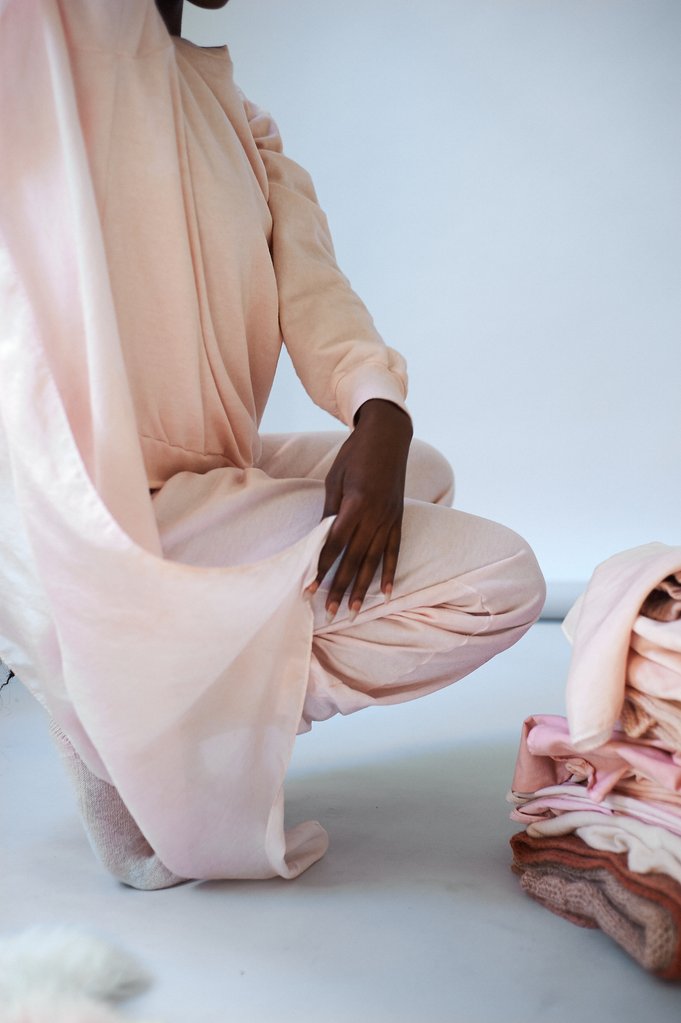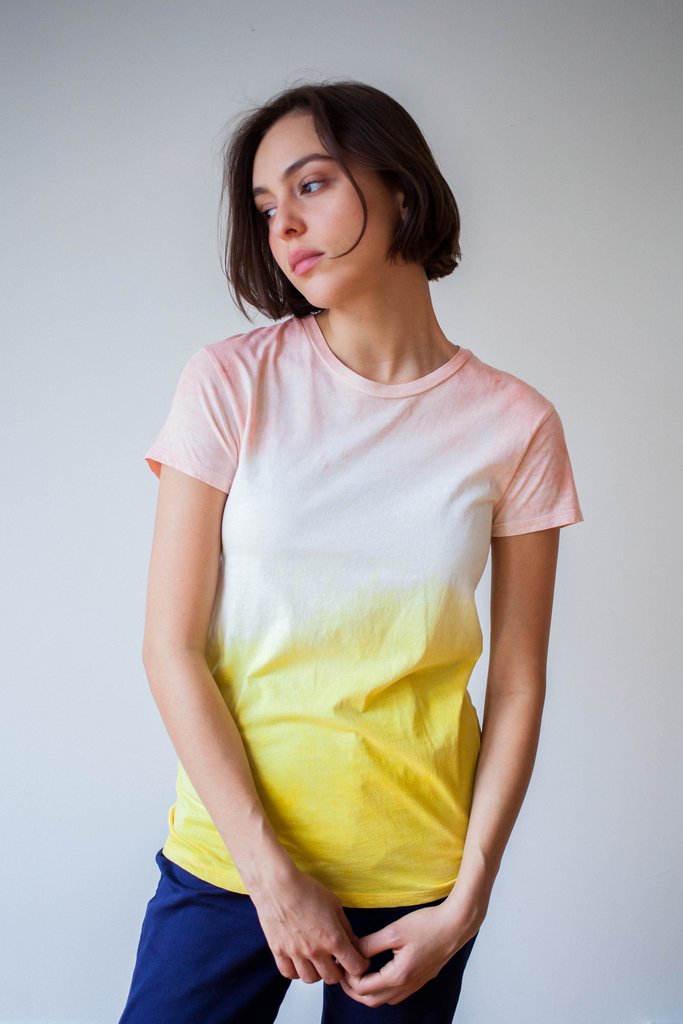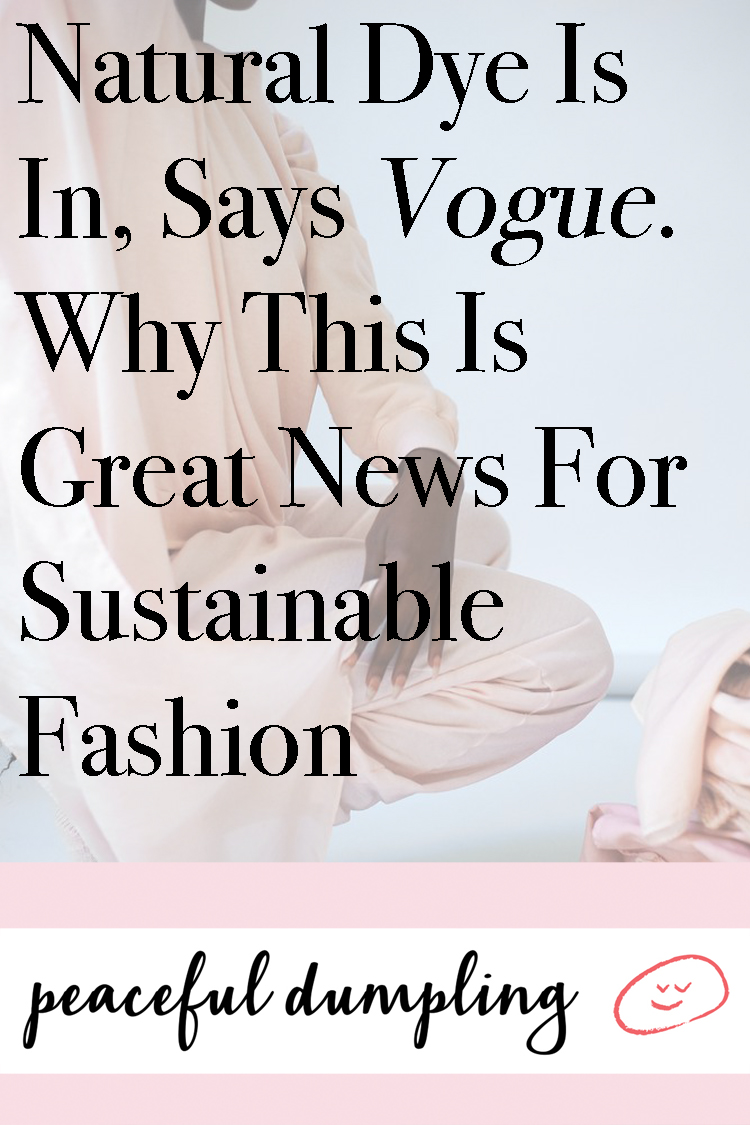It’s something of a conundrum: I love a vibrant, well-pigmented garment, but the process of dyeing these products hurts the environment, which in turn pricks my conscience. So what should I do, wear colorless, dye-less clothes? While that would help, it’s not much of a compromise; I want to aid the environment and look good doing it. So naturally, I was thrilled to learn that the textile industry is turning towards natural dyes as an environmentally conscious alternative to synthetic ones.

ALR Naturally Dyed Pale Pink Sweatshirt
The Problem with Synthetic Dyes
Synthetic dyes impact the environment through their characteristically high biological oxygen demand (BOD). If left untreated, dye-containing effluent flows produced by textile industries would deplete the water sources they’re typically released to of oxygen. Thus, the high oxygen demand of these industrial flows effectively decreases the surrounding environment’s ability to sustain oxygen-dependent wildlife. Thankfully, instead of releasing their effluents directly to the environment, these industries are legally required to release them to municipal wastewater treatment plants, which treat incoming flows for BOD—and an innumerable array of other harmful pollutants— before releasing these flows back to the environment. But even so, highly polluted incoming flows can place a notable strain on treatment plants, causing their accelerated deterioration and thus a more frequent need to incur maintenance costs.
Highly polluted incoming flows deplete a plant’s treatment chemicals and microorganisms more quickly, requiring municipalities to restock their treatment constituents more often. This replenishing of wastewater treatment constituents is integral to the continued thorough cleaning of all incoming wastewater, in preparation for release back to the environment and residences for continued use. Given that wastewater treatment plants can clean even horribly polluted water, it may no longer be obvious why incoming flows to the treatment plant should be kept as lightly polluted as possible. Since water treatment is a public service which is paid for using taxpayer dollars, the more polluted the incoming the wastewater, the more it costs to clean that water, and the more we all pay. Therefore it is in both our environmental and economic best interest to ensure that the water entering municipal treatment plants is as lightly polluted as possible.
How Natural Dyes Can Help
The use of natural dyes in the place of synthetic ones would decrease this pollution, considering that they have a less negative impact on the environment. But this simple knowledge is unlikely to be enough to convince big textile business to change its dyeing processes: businesses of this caliber are heavily interested in generating maximal profit, and the synthetic dyeing process is more cost-efficient than the natural one. In order to steer big business in an environmentally conscious direction, the environmentally responsible product has to be what the consumer wants; it has to be cool, in style, en vogue.
Believe it or not, it already is in Vogue! Magazine, that is. Designer Benedicte Lux has been featured in the illustrious fashion publication for her serendipitous discovery of avocado pits as a natural source of pink dye, and the fashion world is buzzing about it. As it turns out, almost every color imaginable can be produced using natural dyes. Fashionista magazine ran a story on designer Audrey Louise Reynold, budding fashion entrepreneur and owner of her all-natural, self-titled Brooklyn dyehouse. Interior design enthusiasts are ecstatic about dyeing studios like Tintoreria, where they can mail their previously-used duvets and sheets to be dyed a new color, giving their homes a fresh new look. This is great news for those who subscribe to the notion that variety is, indeed, the spice of life.

ALR Flower and Turmeric Shirt
Unfortunately, there is a slight catch: natural dyes only take to natural fabrics—they are not effective at coloring synthetic ones. So not only do natural dyes have to become the new trend, but natural fabrics do as well.
My friends, we have a lot of fashion influencing to do.
But hope it far from lost! Benedicte Lux, Audrey Louise Reynold, and Tintoreria all operate via online hubs, available to any explorer of the world wide web. Thus, the potential to effect positive change for the environment is at our fingertips, and our mission—should we choose to accept it—is to make natural dyes the next big trend. Put this on your list of conversation topics before your next awkward date; release some tension at the Thanksgiving table by breaching this ideological territory; stuff some Christmas stockings with naturally-dyed cotton socks this holiday season, accompanied by a carefully-penned card explaining the movement—the possibilities are endless, just like our responsibility to steward the only environment we have.

Are you pro natural dyes?
Also by Rebecca: Fatigue, Weakness? How To Avoid Anemia With 3 Iron-Rich Vegan Meals
Related: We Found The 5 Chicest Non-Toxic Clothing Brands That Put Customer Wellness First
Meet Cupro—The Vegan Silk That’s Just As Luxurious But *Way* Easier To Care For
Get more like this—Subscribe to our daily inspirational newsletter for exclusive content!
__
Photo: Audrey Louise Reynold Clothing




